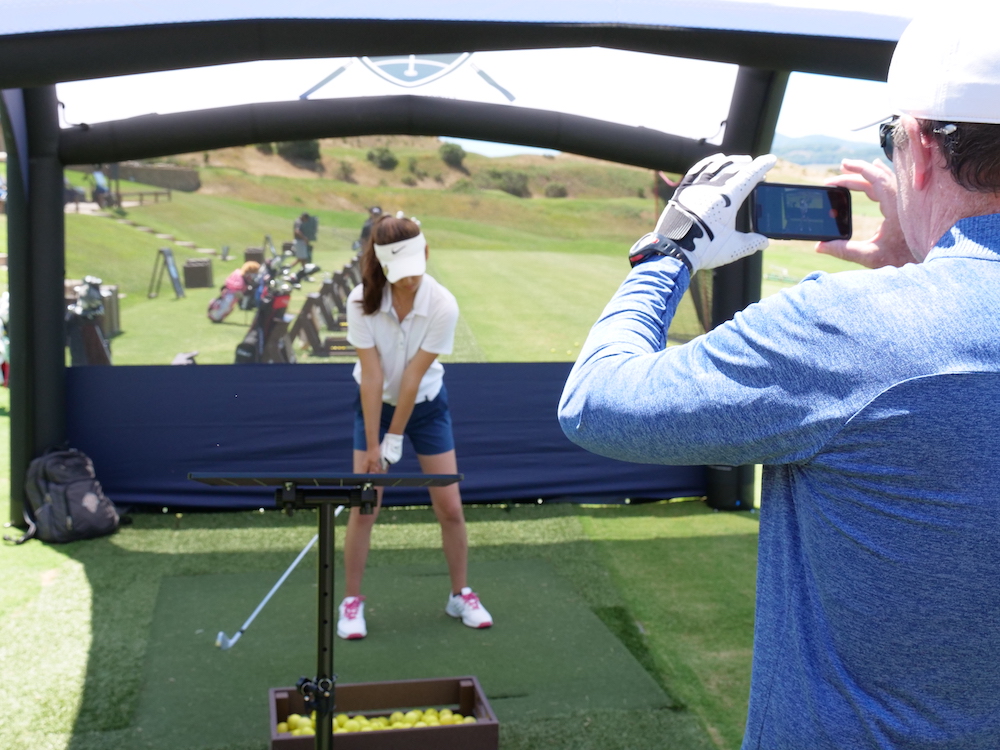If you caught our last post featuring Bay Club’s latest golf addition, Academy, you may recall our interview with Tim Mahoney, Troon’s Director of Global Education and Director of Instruction for Bay Club Academy.
Tim’s passion for improving each player’s golf game is contagious, and we wanted to learn some of the highlights that Tim focuses on to advance a player’s swing—especially while we’ve got a lot of time right now to learn new things! We not only covered the top three tips that Tim gives players to improve their golf swing (obviously an important part to bettering your overall game), but also how Bay Club’s Academy program helps correct some of the common swing mistakes that players make.
Looking to correct a flaw or two in your swing? Look no further. See Tim’s recommendations below, grab a club at home, and check out Bay Club’s Academy to put these tips into practice.
So what are Tim’s Top 3 Tips to Improving Your Golf Swing?
Improving Your Grip
Don’t think your grip is that big of a deal? Think again! Tim says the quickest and simply the easiest means of improving your game are by perfecting your grip. A perfect grip will improve an imperfect swing plane, an imperfect swing path, and an imperfect impact. Using a proper grip procedure will allow you to position your hands on the club consistently every time you swing the golf club. Here’s a little off-the-green instruction on getting your grip just right.
Step 1 Allow your arms to hang freely by your sides as you position the club under the heel pad of your left hand with the club planed and the clubface square.
Step 2 Elevate the club and establish the width of the swing, with the club in front of you position your right hand on the club. Connect your hands by placing your lifeline on top of the thumb.
A golfer has three options to connect the hands: overlap grips allows for more wrist cock, an interlocking allows for more direction control, and a baseball grip allows for a higher trajectory. Perfect your grip and perfect your game. A perfect hold will perfect your ball flight.

Mastering Short-Game Shots
At the Bay Club Golf Academy we have eliminated shots titles: chipping and pitching, and we’ve replaced this with a low shot or a high shot. In all short-game situations, the player’s goal is to land the golf ball safely onto the putting surface and allow the golf ball to release to the hole. Successful short game results are impacted by a correct set-up, swing motion, and club choice.
Proper club choice is determined by the lie of the ball, the amount of green you have to work with, and the distance you are away from your desired landing area. The worse the ball lies, choose a higher-lofted club. The more green you have to work with, take a lower-lofted club to allow for more run out. The further you are away from the landing area, choose a higher-lofted club in-order to land the golf ball safely onto the green. When in doubt, choose the higher lofted club and produce a lower ball flight.
For a lower lofted shot, position the ball towards your back foot, lean your body weight towards the target with the shaft leaned forward. Keep in mind that the golf club will bottom out directly below your nose. Position your head in front of the ball and the club will find its low spot in front of the ball.
During your swinging motion, minimize the amount of hand action and pivot on the backswing. Allow your upper body to turn back with arm motion. The clubhead should remain under your hands. On the forward swing, allow your resisted core hips to initiate the motion with limited hand and wrist motion. The clubhead should remain under your hands. Hold your finish until the ball comes to rest.
Eliminate the shot titles during your golf rounds and attempt to control your short game shots with elevation. Set-up, club choice, and motion will give you controlled results and lower scores.

Improving Ball-Flight Consistency
Consistency is the number one goal of all players. Distance, direction and trajectory make up impact the ball-flight. Golfers need all three elements for consistent ball striking. Tim believes that the bet sequence of learning is: trajectory, distance and direction.
Trajectory is controlled by….
1. Club Selection: the club is designed to provide loft. Allow the manufacturer to get the ball airborne.
2. Angle of Approach: the correct angle of approach provides solid impact and the proper effective loft.
3. Set-up: consistency starts here. Grip, posture, ball-position, aim, mind-set and tension level are the fundamentals of the pre-swing.
4. Swing plane: a vertical swing shape will produce high shots and a flat swing shape will produce lower shots.
5. Swing speed: without swing speed, the golfer has a difficult time producing loft. Golfers with a limited swing speed will produce the same trajectory for all clubs.
Distance is controlled by….
1. Club Selection: longer clubs for longer shots.
2. Length of motion: increased range of motion will assist in distance.
3. Solidness of contact: hitting the ball with the center, while considering the influence of the path and plane. Vertical plane produces toe hits and a flat plane produces heel hits.
4. Swing speed at impact: body rotation, arm speed, and wrist movement are the biggest influences. Your overall swing speed is the goal; not clubhead speed.
Direction is controlled by…
1. Aim: eyes, shoulders, forearms, hips, knees, and heels should be in a parallel line.
2. Clubface alignment at impact: Clubface should be at a right angle to your swing path at impact.
3. Swing path at impact: a swing path that goes from the inside, to along the target line, to the inside.
In short, Tim says, ball flight has three elements: trajectory, distance, and direction. You must master all three in order to gain true consistency.
Ready to perfect your golf swing? Go live with Troon and Tim Mahoney on Facebook today, March 20, 2020 at 1:00 pm.





